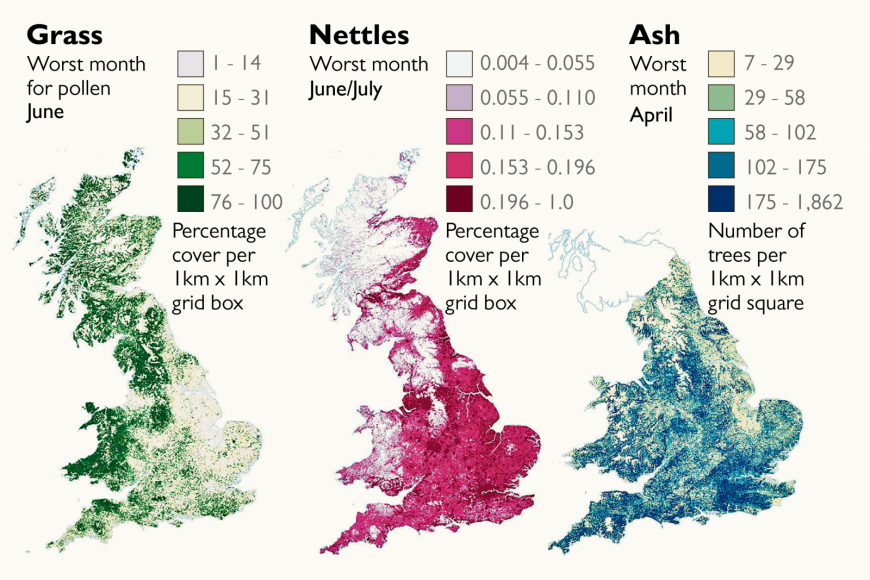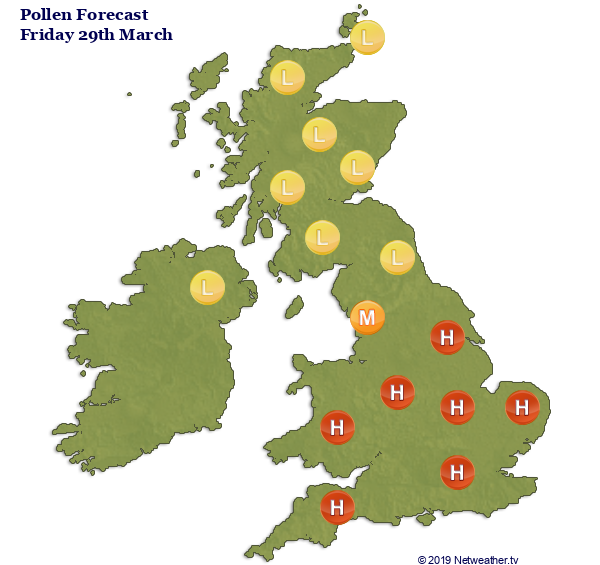
One in five people in the UK suffer from hay fever and this year it appears the season has got off to an early start. Weather plays an important role in the onset of the hay fever season, its severity and longevity. Weather conditions can influence pollen levels in the following ways:
We have just had a very mild winter, culminating in a record-breaking mild February, this led to trees releasing pollen early this year. Tree pollen counts normally start towards the end of March, but this year people were reporting hay fever symptoms of itchy eyes, runny nose and headaches in late February, a full month early, thanks to unseasonably mild and dry weather in February.
The Met Office article on “When is hay fever season in the UK?” states the following:
Tree pollen occurs first, typically from late March to mid-May, and affects around 25% of people. Most people are allergic to grass pollen (which actually has two peaks) and the season lasts from mid-May until July. Weed pollen can be released at any time but the season typically covers the end of June to September.
The first trees to flower are hazel, birch and alder in January and February, but the main tree pollen season tends to run from late March through to mid-May, just ahead of trees coming into leaf. This can start early, like this year, or late like last year in April or 2013, when both years experienced rather cold March weather, with freezing temperatures and snow. The length of tree pollen season can vary too, depending on weather conditions.
The chart below (courtesy of the Met Office) shows the main release periods and peaks of pollen from trees, grass, weeds, crops, etc.
Example of mapping pollen hot spots based on pollen type

Pollen levels can reach peaks at different times of day, usually in the morning and late afternoon, but more particularly early evening. Hay fever symptoms usually appear when the pollen count is high, which for grass exceeds 50 grains of pollen per cubic metre, it maybe higher for some types of trees, birch for example, when pollen counts exceed 80 grains per cubic metre
What are pollen allergies and hay fever?
Pollen count forecasts
Netweather issue a daily pollen count forecast during the season for pollen, which has a forecast for 5 days ahead.

Today the pollen count is forecast to be high across much England and Wales, medium to low across northern England, low across Scotland and Northern Ireland – where we have more in the way of cloud. The pollen at the moment mostly produce by trees. High pollen levels are forecast to become confined to SE England and East Anglia on Saturday, then the forecast for Sunday is low in the north to medium in the south, probably due to lower temperatures than today, as cooler and fresher conditions spread down from the northwest
Loading recent activity...